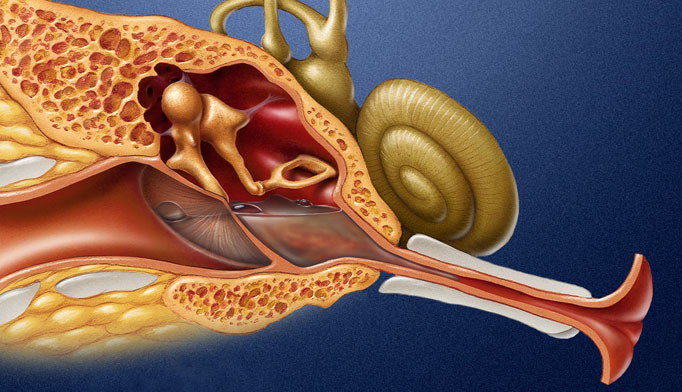

The body articulates with the malleus, the short limb attaches to the posterior wall of the middle, and the long limb joins the last of the ossicles the stapes. The next bone - the incus - consists of a body and two limbs. They are connected in a chain-like manner, linking the tympanic membrane to the oval window of the internal ear. The bones of the middle ear are the auditory ossicles - the malleus, incus and stapes. Posterior wall (mastoid wall) - it consists of a bony partition between the tympanic cavity and the mastoid air cells.It separates the middle ear from the internal carotid artery. Anterior wall - a thin bony plate with two openings for the auditory tube and the tensor tympani muscle.It contains a prominent bulge, produced by the facial nerve as it travels nearby. Medial wall - formed by the lateral wall of the internal ear.Lateral wall - made up of the tympanic membrane and the lateral wall of the epitympanic recess.Floor - known as the jugular wall, it consists of a thin layer of bone, which separates the middle ear from the internal jugular vein.It separates the middle ear from the middle cranial fossa. Roof - formed by a thin bone from the petrous part of the temporal bone.The two main parts of the middle ear have been labelled. The head articulates with the incus, and the base joins the oval window. It is stirrup-shaped, with a head, two limbs, and a base. It joins the incus to the oval window of the inner ear. The stapes is the smallest bone in the human body. The next bone – the incus – consists of a body and two limbs. The malleus is the largest and most lateral of the ear bones, attaching to the tympanic membrane, via the handle of malleus. The head of the malleus lies in the epitympanic recess, where it articulates with the next auditory ossicle, the incus. This movement helps to transmit the sound waves from the tympanic membrane of external ear to the oval window of the internal ear. Sound vibrations cause a movement in the tympanic membrane which then creates movement, or oscillation, in the auditory ossicles. The bones of the middle ear are the auditory ossicles – the malleus, incus and stapes. This hole is known as the aditus to the mastoid antrum. Superiorly, there is a hole in this partition, allowing the two areas to communicate.

Posterior wall (mastoid wall) – it consists of a bony partition between the tympanic cavity and the mastoid air cells.Anterior wall – a thin bony plate with two openings for the auditory tube and the tensor tympani muscle.Medial wall – formed by the lateral wall of the internal ear.Lateral wall – made up of the tympanic membrane and the lateral wall of the epitympanic recess.Floor – known as the jugular wall, it consists of a thin layer of bone, which separates the middle ear from the internal jugular vein.Roof – formed by a thin bone from the petrous part of the temporal bone.The middle ear can be visualised as a rectangular box, with a roof and floor, medial and lateral walls and anterior and posterior walls.


 0 kommentar(er)
0 kommentar(er)
